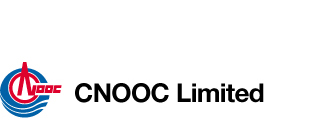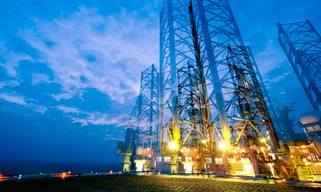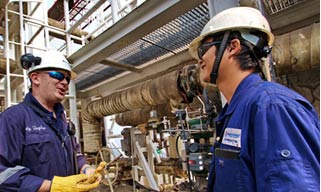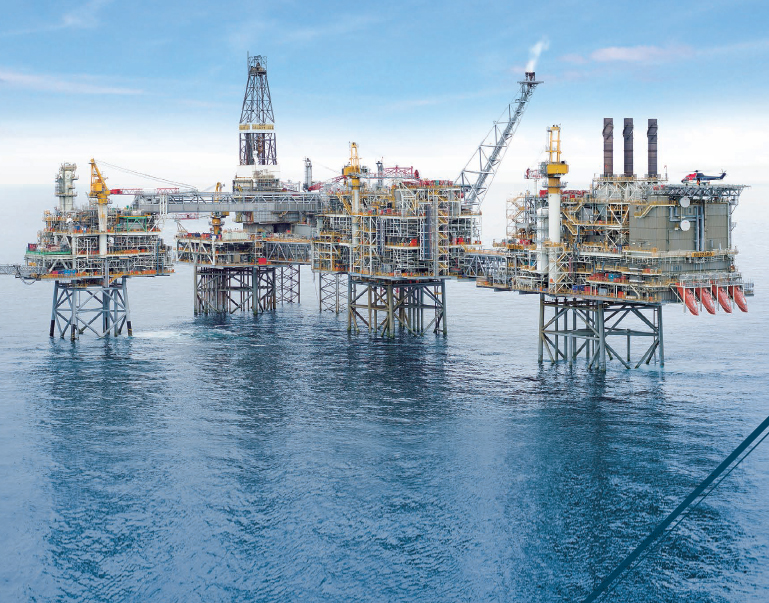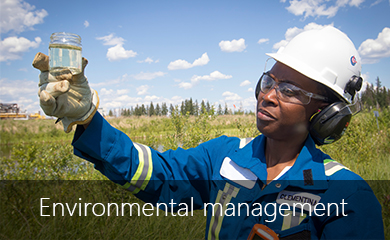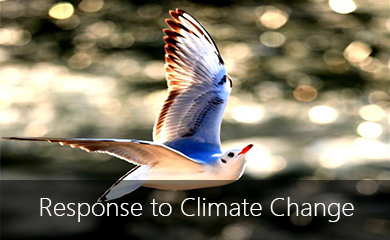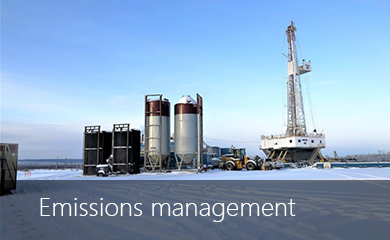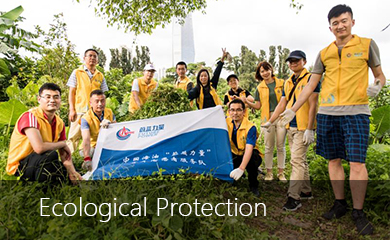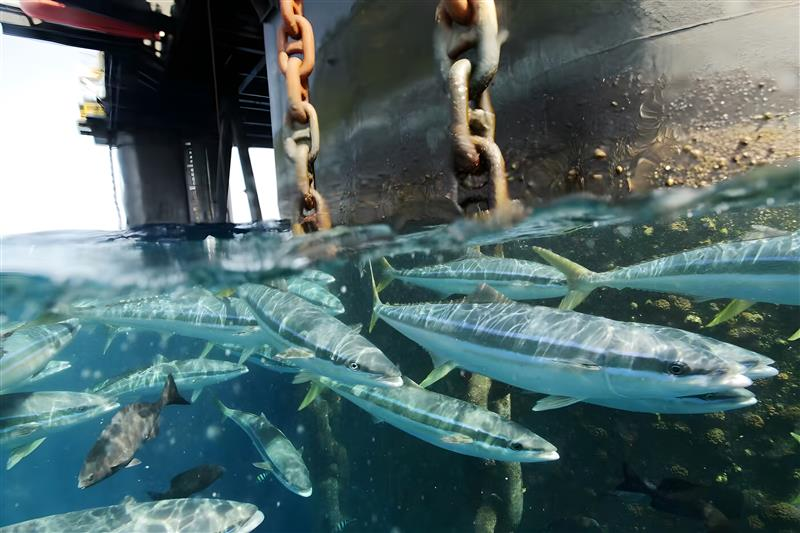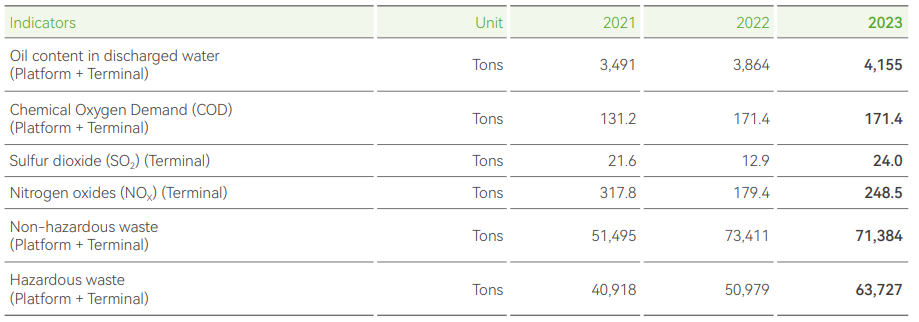Environmental Protection
CNOOC Limited supports green production by strictly controlling pollutant emissions, conducting pollutant and waste management and monitoring throughout the operation processes, thereby reducing waste.
CNOOC Limited strictly complies with the Environmental Protection Law of the People's Republic of China and other relevant laws and regulations, as well as the relevant policies of the countries in which it operates to strengthen environmental protection. In 2023, we amended the Management Rules for Ecological Protection and Pollution Prevention and Control and the Management Rules for Discharge Permit and Environmental Protection Information Technology to further refine the requirements for pollution control. We have set up special teams for waste gas treatment, wastewater treatment and solid waste management, respectively, to guide each unit to achieve high standards of pollutant treatment and to promote the implementation of relevant retrofitting and upgrading work.
Waste Water
CNOOC Limited implements laws, regulations and policies in China and other countries of operation and puts extensive effort into marine environmental protection and control. For oily wastewater from exploitation of oil and gas fields, oily wastewater from operation vessels, domestic sewage, and drilling fluids, the Company strictly implements the standard requirements including the Discharge Standard for Water Pollutants from Ships, the International Convention for the Prevention of Pollution from Ships, 73/78, the Regulations on the Administration of Sealing for Discharge Equipment on Ships in Coastal Waters, Effluent Limitations for Pollutants from Offshore Petroleum Exploration and Production and Biological Toxicity for Pollutants from Marine Petroleum Exploration and Exploitation, and treat the wastewater by means of re-injection, reuse, land disposal or discharge after meeting standards.
Waste Gas
In accordance with the laws, regulations and policies of China and the countries in which we operate, we recycle associated gas generated from oilfield exploitation to the extent possible, and dispose of the small amount of associated gas that cannot be utilized by flaring or reinjection. In 2023, in active responses to the government's planning requirements for air quality protection, we conducted special inspections for the prevention and control of air pollution and promoted the emission reduction of VOCs in land terminals to do our part in defending a green homeland.
Solid Waste
We strictly abide by the Technical Specification for the Collection, Storage and Transportation of Hazardous Waste, the Standard for Pollution Control on Hazardous Waste Storage and other standards and norms in China, as well as the Company's relevant internal requirements such as the Management Rules for Ecological Protection and Pollution Prevention and Control for compliant disposal of hazardous wastes. For non-hazardous waste, we transport the domestic waste (excluding food waste) and production waste generated by our platforms back on land and engage qualified organizations for treatment.
We continue to strengthen data traceability throughout the solid and hazardous waste transfer process. In 2023, the solid waste management information system was launched in five branches, incorporating generation, collection, storage, transfer and disposal of solid waste into the platform for management. In addition, we have enhanced data verification and established tracking and review processes for the rectification of solid waste treatment problems identified during inspection, which provides an effective management and supervision mechanism to monitor hazardous waste throughout the process.
Prevention of Oil Spills
The Company regularly holds ecological environment risk conferences, undertakes risk investigations, hazard elimination, emergency drills and other measures, and monitors facilities and pipeline operating parameters in real time to reduce risk of oil spill. The Company has a professional oil spill response team of 110 members, 9 professional environmental protection ships, 2 oil spill emergency center bases, 6 oil spill response equipment warehouses, and more than 20,000 meters of oil fence, basically realizing the full coverage of marine emergency forces for exploration and development of offshore oil and gas fields. We have also strengthened cooperation with the Ministry of Ecology and Environment (MEE) for emergency system connection and emergency resources sharing, and the Marine Environment Emergency Base of MEE has established a cooperative relationship with 5 of our branches.
Environmental Supervision and Audit
CNOOC Limited continues to strengthen the supervision of ecological and environmental protection. In 2023, Our environmental compliance audit has covered all 8 production subunits, and the environmental management suggestions thereon will enhance the management of environmental protection capability. In 2023, the Company commissioned qualified monitoring units to implement full-coverage supervisory monitoring for a total of 265 offshore facilities of their offshore pollutant discharge. This would draw a clear picture of the pollutant disposal level and discharge compliance level of our offshore oil and gas fields, and promote rectification and improvement.
Improvement of Environmental Protection Capability
In 2023, CNOOC Limited launched eco-environmental protection management training courses, inviting senior experts from the Policy Research Center for Environment and Economy, MEE of the People's Republic of China and the China National Environmental Monitoring Center. The participation rate of full-time environmental management personnel was 100%. The Company also arranged the special training courses to reinforce the ability of internal environmental protection trainers, which were attended by over 100 environmental management personnel or technical personnel, effectively improving the ability of sharing knowledge and experience regarding environmental protection.
Emission and Waste Reduction Targets:
· The emission concentration of various pollutants complies with the corresponding standards, and the emission does not exceed the total control target;
· Waste gas emission from onshore terminals is discharged after being treated up to standard: The emission of air pollutants like SO2 and NOX is mainly subject to the Integrated Emission Standard of Air Pollutants (GB 16297-1996). However, if any, stricter ecological environment requirements from local authorities shall prevail. To facilitate the emission reduction of VOCs in onshore terminals, we mainly refer to the Emission Standards of Air Pollutants for Onshore Oil and Gas Exploitation and Production Industry (GB 39728-2020);
· 100% of hazardous waste is entrusted to qualified third party for compliant disposal: Hazardous waste management is mainly subject to the National Hazardous Waste List (2021) and the Standard for Pollution Control on Hazardous Waste Storage (GB 18597-2023) and Technical Specifications for the Collection, Storage and Transportation of Hazardous Waste (HJ 2025-2012);
· 100% of non-hazardous waste is entrusted to licensed third parties for compliant disposal: Nonhazardous waste management is mainly subject to the Standards for Pollution Control on the Nonhazardous Industrial Solid Waste Storage and Landfill (GB 18599-2020);
· No significant or large-scale oil spill incidents at sea.
In 2023, the pollutants were discharged or disposed of in compliance with standards, no major environmental violations occurred, and no significant or large-scale oil spill incidents occurred. The 2023 emission targets were therefore fully achieved. We will continue to benchmark against these targets for pollutant emissions and waste management in the future.
*We strictly follow the requirements of China's laws and regulations and always adhere to the principle of minimizing and recycling solid/hazardous waste, and realizing the harmless disposal of solid/hazardous waste. The solid waste/hazardous waste or the production intensity of solid waste/hazardous waste is not disclosed for the time being as no relevant description has been found in domestic industry regulatory requirements and it is not a key performance indicator for the daily management of enterprises.
*The Company's sulfur dioxide and nitrogen oxides emissions are collected and calculated based on the measured data of pollutants’ concentration.
